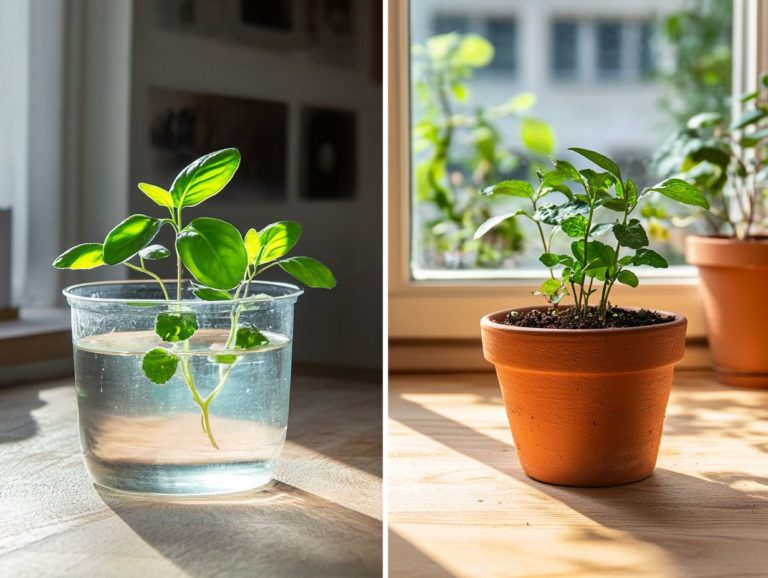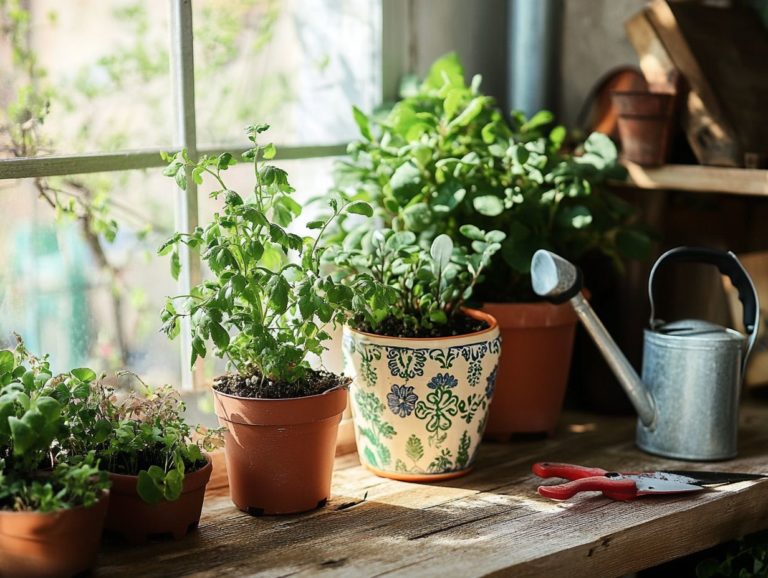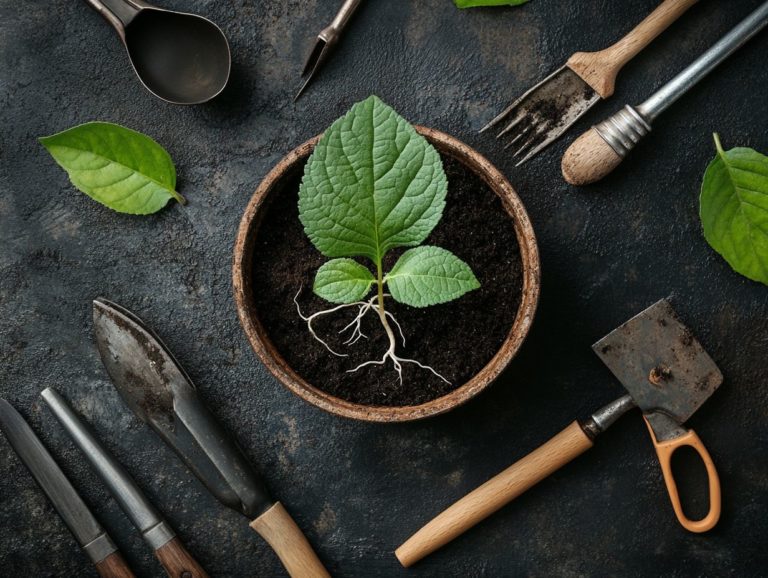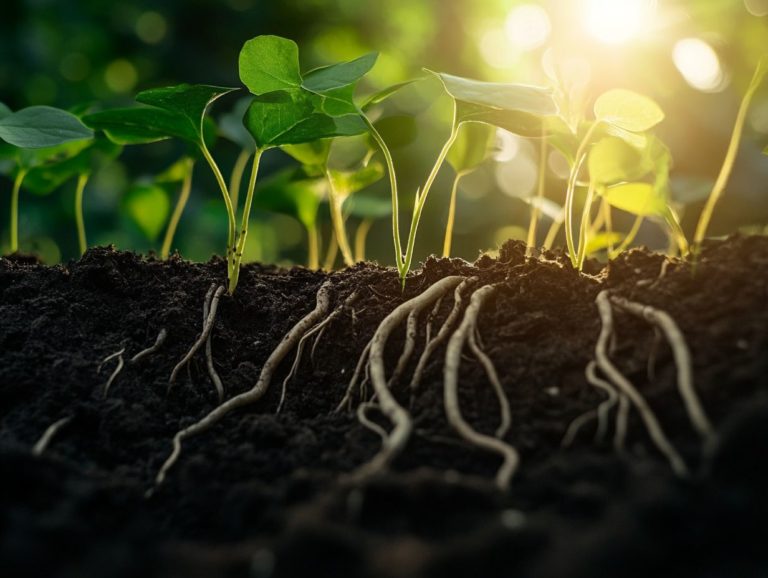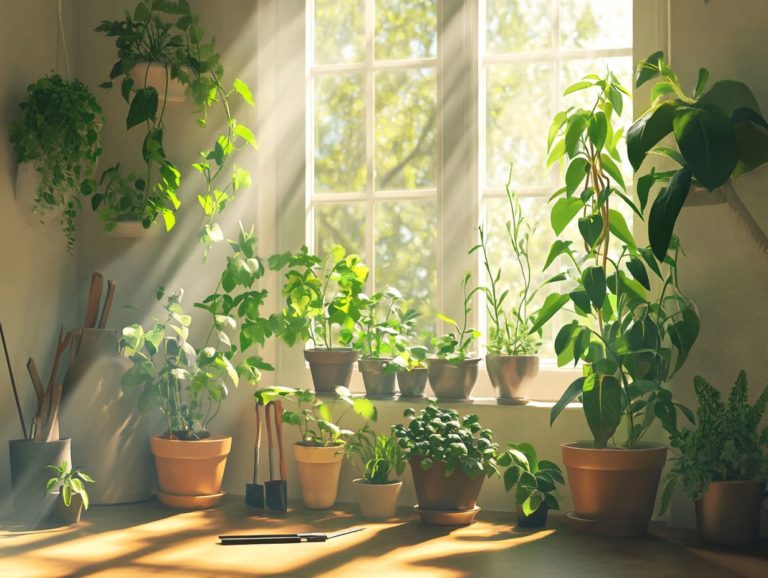The Science Behind Plant Propagation
Plant propagation is an intriguing blend of art and science that empowers you to expand your green spaces.
By understanding the methods of propagation both sexual and asexual you unlock many possibilities for your gardening endeavors and plant passions with effective gardening tips.
This article explores essential factors influencing successful propagation, from environmental conditions to plant genetics. You will also find tools and techniques designed to maximize your success, along with common pitfalls to avoid.
Immerse yourself in this exploration to learn how to nurture your plants and witness their flourishing potential!
Contents
Key Takeaways:
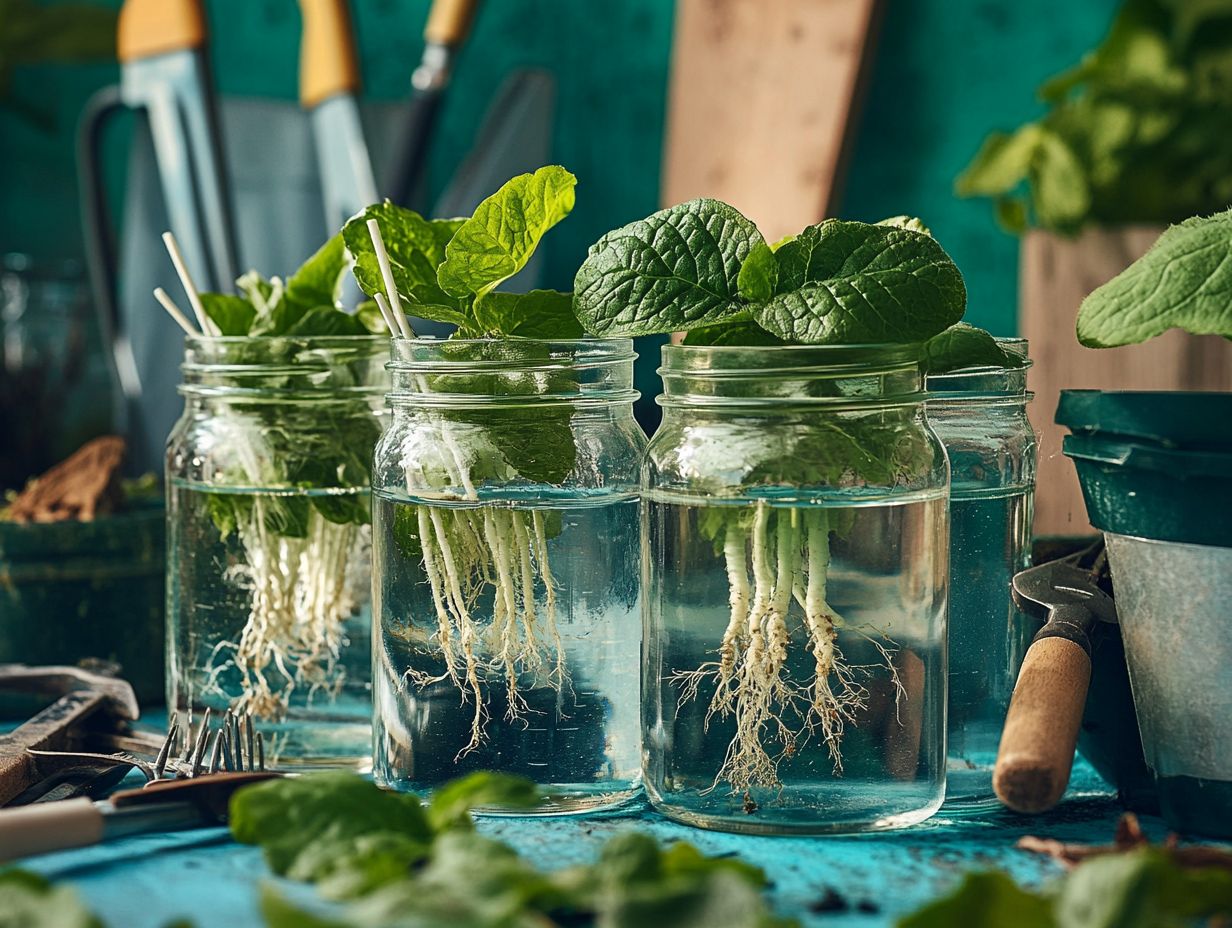
Plant propagation is the process of creating new plants from existing ones. It is essential for maintaining and increasing plant populations.
There are two main methods of plant propagation: sexual and asexual, each with unique advantages and disadvantages.
Successful plant propagation depends on various factors, including environmental conditions, plant species, genetics, and proper tools and techniques. Understanding plant propagation hormones can also enhance your efforts. Avoiding common mistakes is crucial for success.
Understanding Plant Propagation
Understanding plant propagation is essential for anyone eager to expand their collection or embrace sustainable gardening practices. This process includes various methods and techniques that allow you to create new plants from existing ones, facilitating both sexual and asexual reproduction.
It’s not just a vital skill for gardening enthusiasts; horticulturists like Leslie Halleck emphasize the importance of mastering propagation techniques to ensure plant health and vitality. She often discusses techniques like Echeveria leaf propagation and the challenges of cultivating a floppy calla lily. By grasping the principles of plant propagation, you will understand the intricate complexities of growth and reproduction in plant care.
Definition and Importance
Plant propagation is the art of creating new plants from existing ones. This practice is essential for preserving biodiversity in horticulture and gardening.
This technique not only helps you expand your green spaces but also plays a crucial role in protecting plant varieties that might be endangered or threatened. Understanding Plant Breeders Rights helps safeguard unique cultivars. By using methods like seed germination, cuttings, air layering (which involves rooting a stem while it s still attached to the parent plant), and rooting hormones (substances that encourage root growth), you can effectively increase your plant stock while nurturing healthier ecosystems.
Recognizing the importance of propagation allows you to cultivate resilient gardens that provide habitats for diverse wildlife and promote ecological balance. Thoughtfully approached, these practices enhance environmental sustainability, helping you make a positive impact on reducing your carbon footprint and enriching local biodiversity.
Methods of Plant Propagation
Methods of plant propagation can be categorized into two main types: sexual and asexual propagation. Each approach offers distinct advantages for gardeners and horticulturists. Experts like Leslie Halleck provide valuable advice on various seeds.
Whether you aim to diversify your garden or optimize your plant yields, understanding these techniques will support your horticultural endeavors.
Ready to start your plant propagation journey? Dive in and explore the many techniques available!
Sexual Propagation
Sexual propagation is all about reproducing plants through seeds. It requires a keen understanding of the germination process and various environmental factors that influence seed viability.
To start, choose meticulous seed selection. Opt for high-quality seeds that suit your growing conditions.
Some seeds may need stratification, a method that mimics winter to improve germination rates. Techniques like scarification can also be beneficial.
Pay attention to moisture levels and temperature. Seeds need to be kept consistently moist but never waterlogged. The optimal temperature ranges can differ based on the species.
You should also consider external factors like light exposure, soil pH, and humidity. These factors significantly affect the success of germination.
This underscores the importance of crafting a balanced environment, allowing these tiny life forms to thrive.
Asexual Propagation
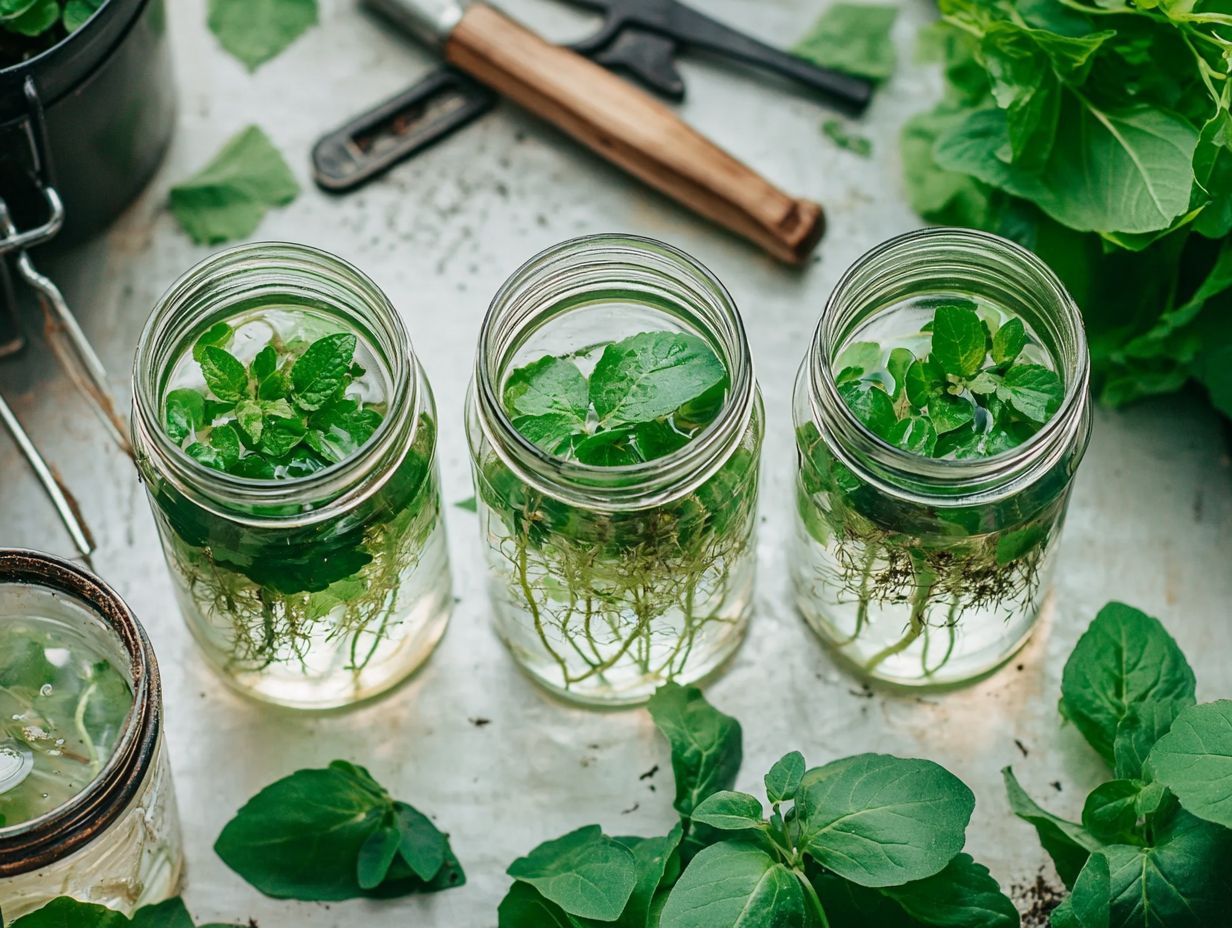
Asexual propagation enables you to cultivate new plants without seeds. Techniques include cuttings, layering, and the application of rooting hormones to stimulate adventitious roots.
These methods not only preserve desirable traits but also allow you to multiply your favorite plants efficiently.
Among these techniques, air layering is particularly noteworthy. It involves girdling a section of the stem and wrapping it in moist sphagnum moss, encouraging root formation while still tethered to the parent plant.
Division is another excellent approach, especially for clump-forming perennials. It allows you to expand and rejuvenate your existing plants easily.
Rooting hormones, such as Indole-3-butyric acid (IBA), enhance the success rates of these techniques by promoting quicker and more robust root development.
By employing these strategies, you can cultivate healthier plants that thrive in their specific environments, ensuring your garden flourishes beautifully!
Factors Affecting Successful Propagation
Successful plant propagation relies on a few key factors that you should consider carefully. Environmental conditions, specific species characteristics, and genetic traits all play significant roles in the success of both sexual and asexual methods.
By paying attention to these elements, you can significantly enhance your propagation efforts.
Environmental Conditions
Environmental conditions are pivotal for successful plant propagation. Key factors include substrate temperature and oxygen availability.
Consider how certain plants flourish only within specific temperature ranges. If it s too cold or too hot, germination and growth can hit a standstill.
The roots of seedlings are particularly sensitive, requiring ample oxygen for robust development. They thrive in well-aerated soil, which helps prevent rot and ensures healthy growth.
Watering methods can differ greatly among species. Some plants prefer consistently moist conditions, while others are more drought-resistant and thrive with less frequent watering.
A perfect illustration of this is the propagation of succulents; they require dry environments and minimal water to root successfully. This highlights the delicate balance necessary to optimize plant health and ensure vibrant growth.
Plant Species and Genetics
Your success in plant propagation relies on the species you choose and its genetic traits. These traits influence important factors like growth rate, resilience, and adaptability.
Different plant species come with various seed types. Some have hard shells that require specific conditions for germination, while others are soft and depend on animals for dispersal.
The genetic traits of these species affect their growth in diverse environments and their ability to withstand pests and diseases. Choosing the right species is crucial for cultivating healthy and vigorous plants.
Understanding the unique characteristics of each species helps you make informed decisions. This knowledge optimizes the propagation process and paves the way for successful cultivation.
Tools and Techniques for Plant Propagation
Using the right tools and techniques is vital for success in plant propagation. Whether you re using cutting, grafting, layering, or division, select the appropriate materials for each method.
Cutting and Grafting
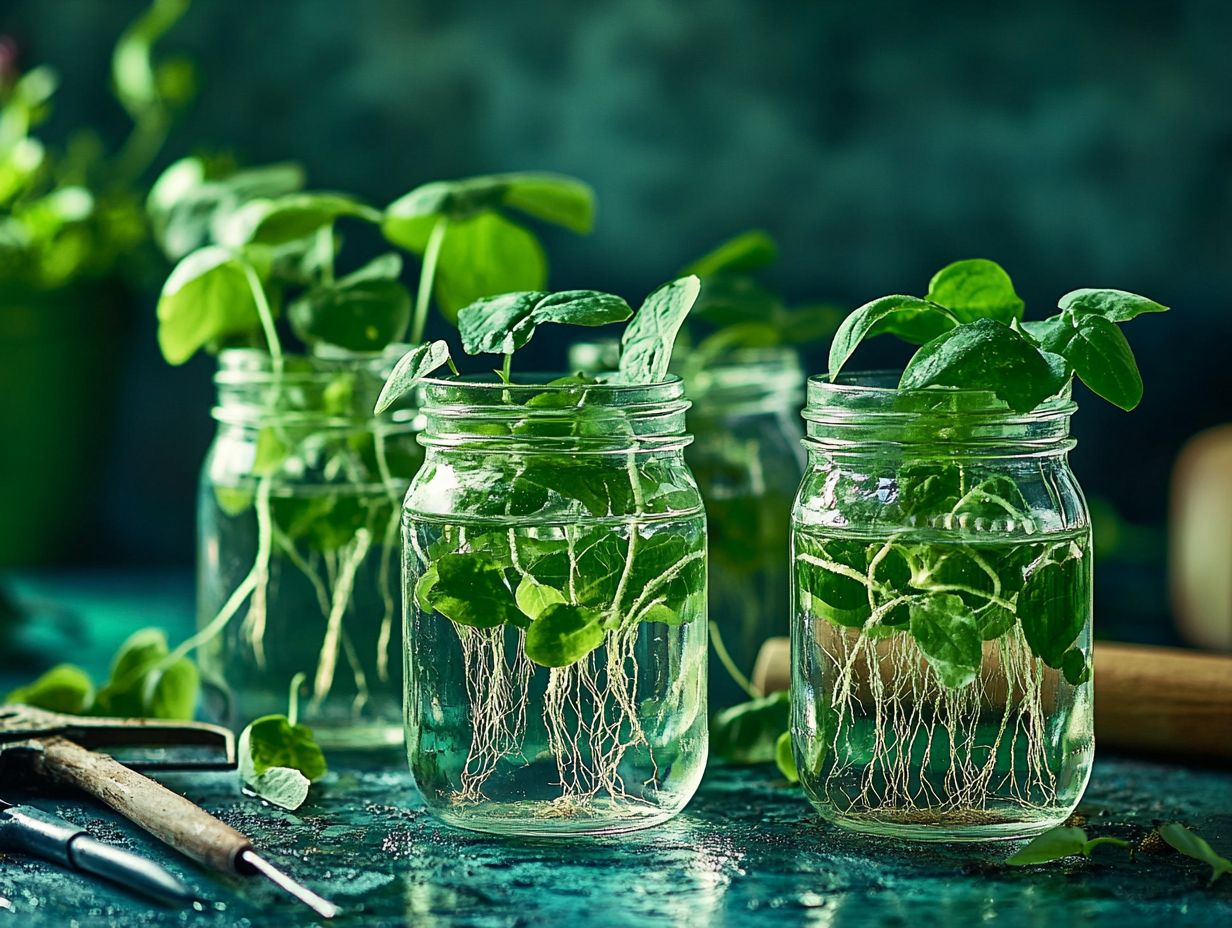
Cutting and grafting are popular methods of asexual propagation. These techniques allow you to create new plants using parts of existing ones, often leading to the growth of new roots.
These methods efficiently replicate the desired traits found in parent plants. For cuttings, simply sever a stem, leaf, or root section, and place it in a suitable medium to develop roots.
Keep these best practices in mind:
- Use a clean, sharp tool for your cuts.
- Maintain a medium that is moist yet well-drained.
Grafting combines different plant parts, allowing one plant to benefit from the root system of another. Proper alignment and the right pressure while sealing the graft promote success.
Both methods produce healthy plants that inherit the hardiness and unique characteristics of their parents. They are invaluable tools in your gardening toolkit.
Layering and Division
Layering and division are excellent propagation techniques. These methods enhance soil health while multiplying various plant species.
They involve carefully separating plants or encouraging new roots to grow. Layering works well for creeping plants, allowing them to root in the soil while still connected to the parent.
Division is beneficial for clumping plants. Splitting and replanting their roots prevents overcrowding and boosts overall vigor.
Maintaining soil health is crucial. Enriching soil with organic matter supports robust root development and reduces stress on plants.
Choose the right season typically spring or fall and ensure adequate watering and soil amendment for successful propagation.
Common Mistakes in Plant Propagation
Avoiding common mistakes can significantly boost your success rates. Steering clear of pitfalls in care and technique positions you for triumph, whether you re a budding horticulturist or an avid gardener.
Avoiding Pitfalls and Ensuring Success
To ensure your success in plant propagation, it s crucial to stay vigilant against common pitfalls and adhere to proven techniques.
Understanding the specific needs of different species is key. Each species has unique requirements for light, moisture, and temperature. For example, when propagating succulents, be sure to let your cuttings dry and form a callus, a protective layer that helps prevent disease, before placing them in the soil. This simple step can dramatically protect your cuttings from rot. To master this technique, it’s beneficial to explore understanding vegetative propagation in plants. Maintaining a consistent watering schedule is vital, as overwatering can lead to unfortunate outcomes.
If you’re new to propagation, consider using water propagation. This method offers visual feedback on root development, giving you a confidence boost as you watch your plants thrive. Consistently monitoring and adjusting your care routines enhances your plants chances to thrive, leading to truly rewarding results.
Frequently Asked Questions
What is the science behind plant propagation?
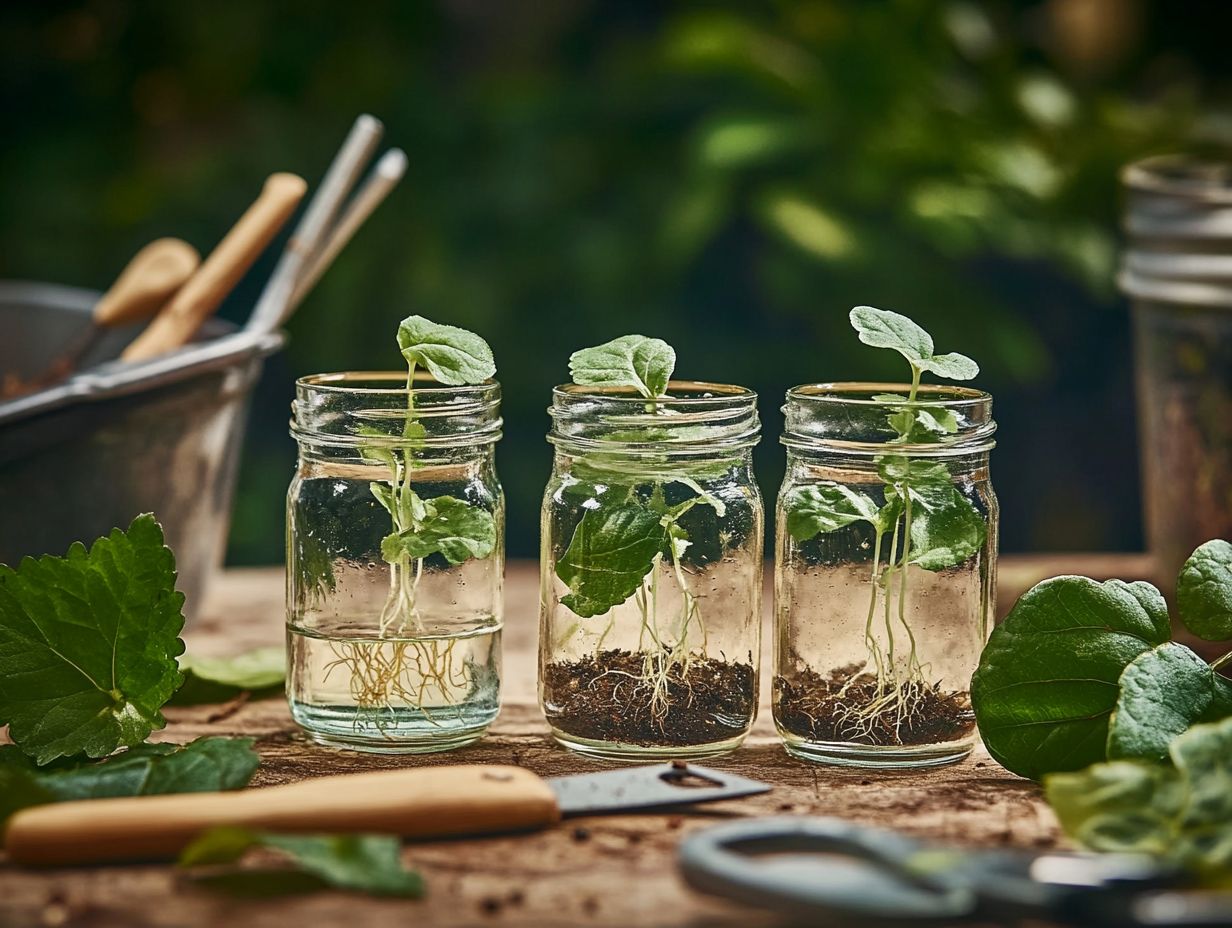
The science behind plant propagation involves understanding the biological processes that allow plants to reproduce and create new individuals.
Why is plant propagation important?
Plant propagation is important for the growth and survival of plant species. It allows them to reproduce and populate their environment.
What are the different methods of plant propagation?
There are several methods of plant propagation, including seed propagation, cutting propagation, layering, grafting, and tissue culture.
How do plants reproduce through seeds?
Plants reproduce through seeds via sexual reproduction. Male and female reproductive cells from two parent plants combine to create a new individual with a unique genetic makeup.
What is the role of hormones in plant propagation?
Hormones are like messengers for plants. They help guide growth and encourage new roots and shoots, making propagation easier!
Why is it important to use reference data in plant propagation?
Reference data provides valuable information and guidelines on best practices for successful propagation and specific requirements for different plant species.

